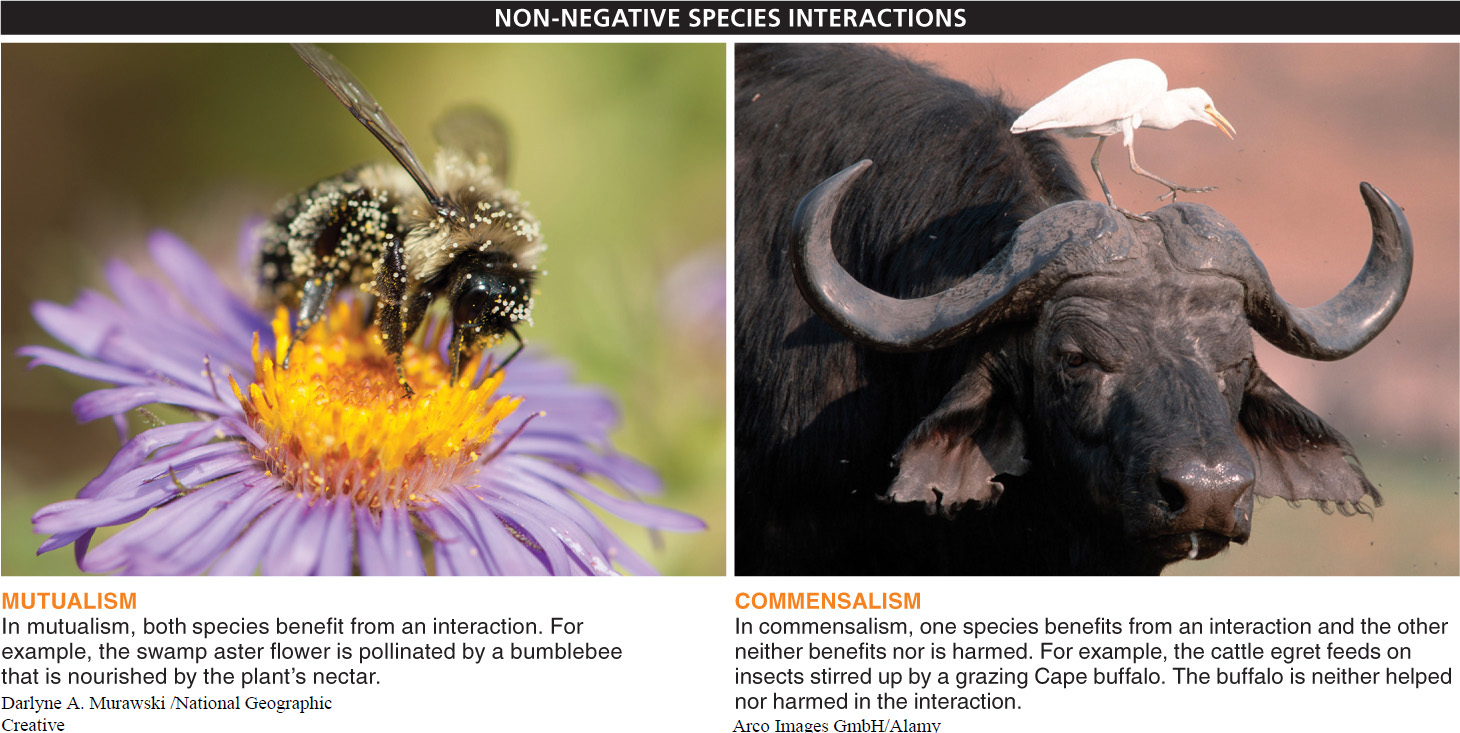It’s easy to get the idea that all species interactions in nature are harsh and confrontational, marked with a clear winner and loser. That is largely the case when it comes to competition and predation. However, not all species interactions are combative. Every flower you see should be a reminder that evolution produces beneficial species interactions as well. These types of interactions fall into two categories: mutualism and commensalism.
637
Mutualism: everybody wins Corals that gain energy from photosynthetic algae living inside their tissues. Termites capable of subsisting on wood, but only with the assistance of cellulose-

Mutualistic interactions are so widespread and ecologically important that they are described in significant detail throughout this book. The relationship between plants and mycorrhizae bacteria, for example, is discussed in Section 12-
You need not look farther than your own gut for an important mutualistic relationship. Living within your large intestine are huge populations of E. coli bacteria that synthesize a significant portion of the vitamin K—
Commensalism: an interaction with a winner but no loser Some species interactions are one-
TAKE-HOME MESSAGE 15.14
Not all species interactions are combative: beneficial species interactions evolve as well. Mutualism, in which both species benefit from the interaction, is widespread and critically important to all ecosystems. In commensalism, one species benefits and the other is neither harmed nor helped.
Mutualism is a symbiotic relationship between two species in which both organisms benefit. Describe two examples.
Photosynthetic algae live inside coral and provide the coral with energy through photosynthesis. Cellulose-digesting microbes live inside the digestive systems of termites and allow them to digest wood. Pollinators and the plants from which they obtain nectar are another example of mutualism.